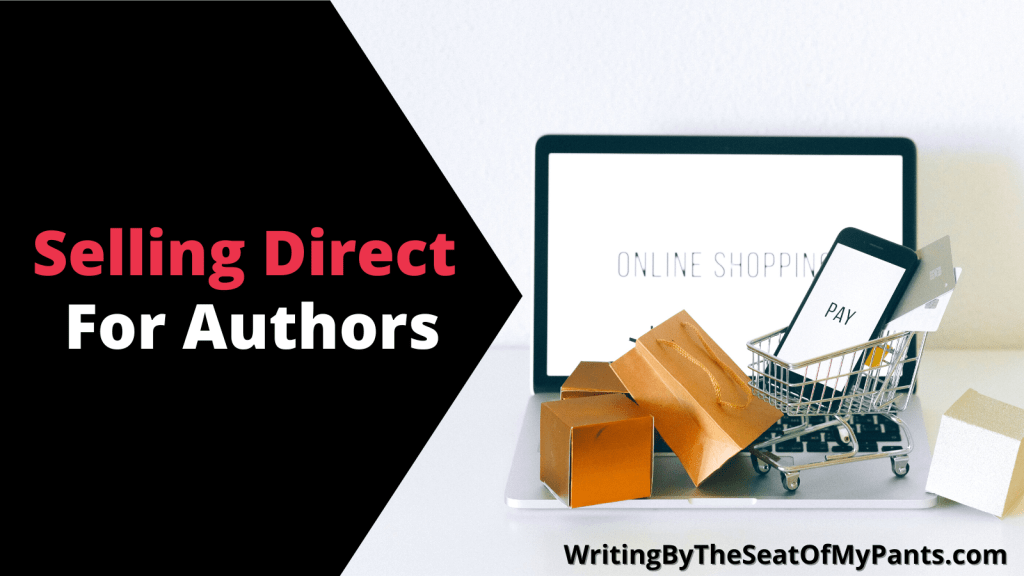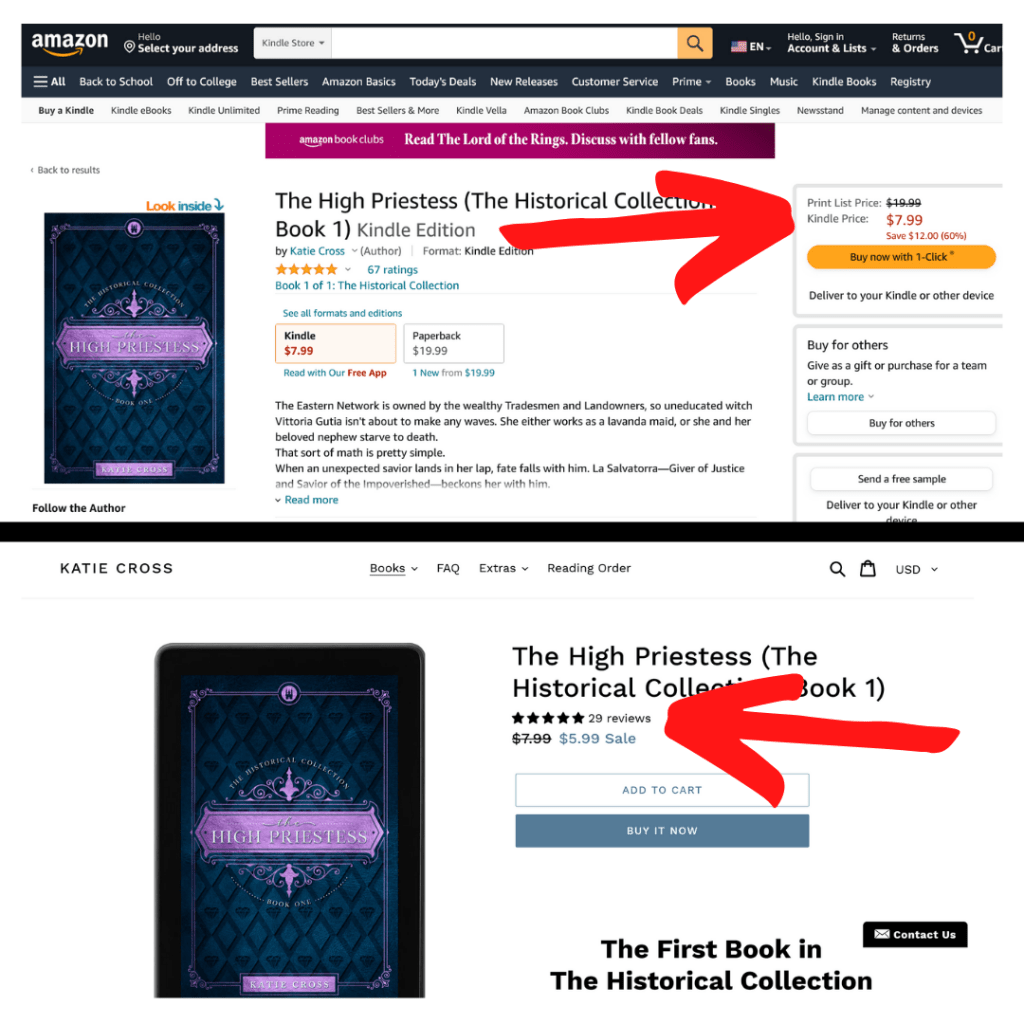
Just a few years ago, selling direct was nearly impossible to do. You needed to hire a web designer and accept payments through PayPal because that was the only way to do things. It all required money, tech know-how, and the patience of a saint to make it work. Now, fast forward to 2023 and there are more authors successfully selling directly to readers and with less hassle.
Today, I’m going to give an example of an author selling direct as well as lots of resources, so buckle up, this is gonna be a good one…
*Disclaimer: I am in no way affiliated with any of the products or services mentioned in this post.*
Step One: Setting Up Your Website
As I did my research for this post, I noticed one thing over and over again which was most of the authors who sold direct used Shopify, an online store builder. That’s because Shopify is considered much easier to use than other services like WooCommerce which takes some technical know-how to get off the ground. Shopify integrates with websites like WordPress, SquareSpace, and Wix. However, if you decide not to use any of these services, you still need to be sure that your website can do the basics like:
- Make seamless transactions
- Is 100% automated
- Can integrate with most apps
Be sure to test your site by purchasing your products from your site BEFORE you open it to the public. You need to make sure the customer journey is just as effortless as it is at any other retailer.
Step Two: Distribution
The authors I studied sold ebooks, print, and even audiobooks on their websites and used various services to deliver the products. For example, when distributing ebooks or audiobook files they used BookFunnel, Payhip, or Prolific Works. And when distributing print books they used Lulu Xpress or Amazon which integrates with Shopify stores.
Step Three: Pricing
One thing I heard over and over again is, “don’t price your books too low” that’s because readers will expect your books to be cheap. Now, they don’t mean pricing your ebooks at $19.00 like some publishers do, they mean being clever when pricing your work and making readers want to come to you rather some big retailer. For example, most of the authors I saw priced their ebooks at $5.99 and above while pricing their Amazon listings at a higher cost. That’s exactly what author Katie Cross did here with her book: The High Priestess

Another thing most authors don’t discuss is creating a thank you page and sending your readers there after making a purchase. This is smart because while there, you can upsell other products which isn’t bad idea if you’re offering a good deal.
The pic above is Cross’ ebook edition, which she sells alongside her audiobooks, and here’s the kicker: she keeps 100% of the profits from all of her digital products. Now, it’s different for non-digital products like print books, because Lulu Xpress and Amazon KDP of course take a cut but in this scenario, you can actually make more money on digital books than on print! Wild, huh?
I can hear you already, “Rachel, how are we supposed to compete with major retailers like Amazon?” well, you can start by offering exclusive products on your website. For example, you can make a box set and offer 3 books on Amazon but offer 4 or 5 books on your own website. You can also offer swag such as; mugs, t-shirts, or bookmarks. Another big one is to offer freebies like puzzles, maps, or quizzes based on your book.
Step Four: Find Multiple Sources of Traffic
Now that you’ve built this site and have everything set up, you’re probably wondering, how do you get people to your website? The more common ways are:
- Advertising: Facebook ads
- Your email list
- Social media
- Virtual book clubs
- Book influencers
- Content marketing like guest posting on popular websites.
- Podcasts
Don’t make the mistake of depending on something like ads to be a reliable source of traffic. Author Katie Cross learned this the hard way when she had great success with Facebook ads but after Apple implemented their new rules about data collection, it made her Facebook ads less profitable. The same happened to her with BookBub, so do yourself a favor: diversify, diversify, diversify.
Step Five: Landing & Thank You Pages
When you send someone to your website via an ad, you should make sure it takes them to a landing page and not your home page. Otherwise, it’s a wasted opportunity to sell them a book. There are many good courses and how-tos and I’ll list some free resources below that will help you learn the art of the landing page:
- Hubspot: 21 of the Best Landing Page Design Examples
- Youtube: The Anatomy Of A High Converting Landing Page by Neil Patel
- Wordstream: The Complete Guide to Landing Pages
In Closing
I wrote this post in response to the changing landscape in the publishing world. As major tech companies like Apple announced they are clamping down on the ways app developers can collect data, it will leave social media sites like Facebook, out in the cold. If you don’t know, many authors use Facebook ads to sell books and if Facebook can’t collect data on the way their users shop, there goes their business model. I also know that in the future Amazon may decide to increase the fees on their KDP platform, and we need to be ready for that. The less we are dependent on big tech companies, the better off we’ll be.
If you found this post helpful, please hit like and share.